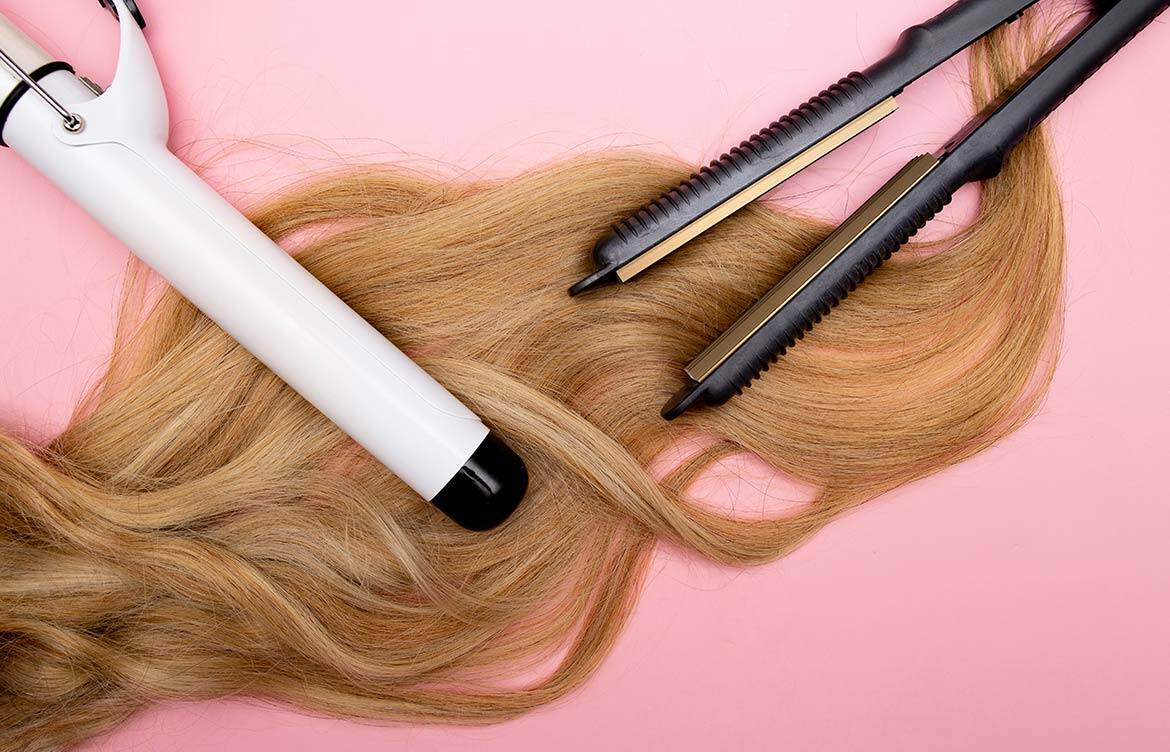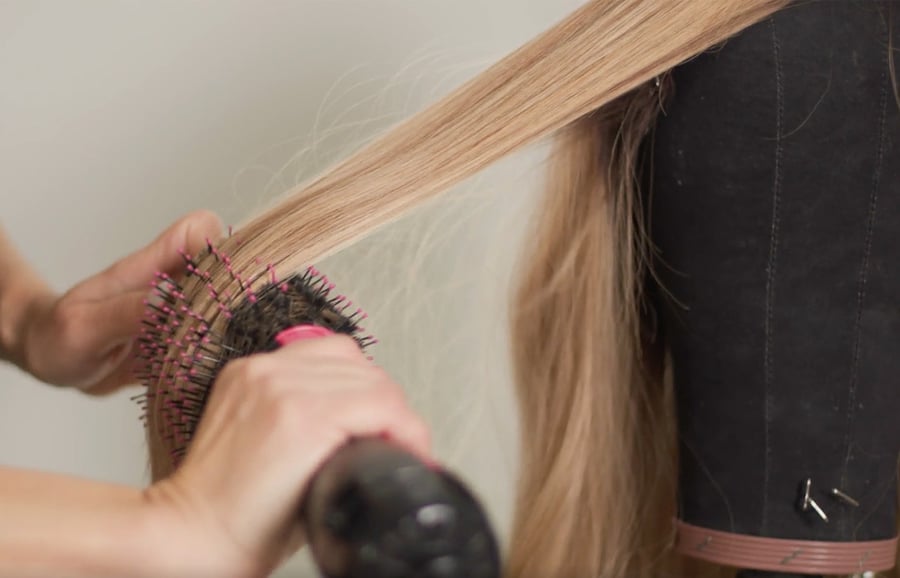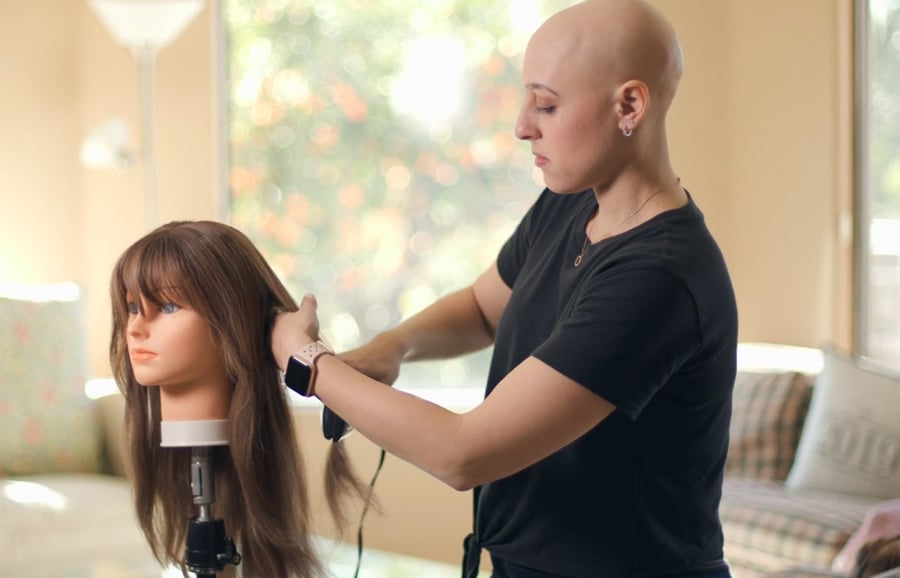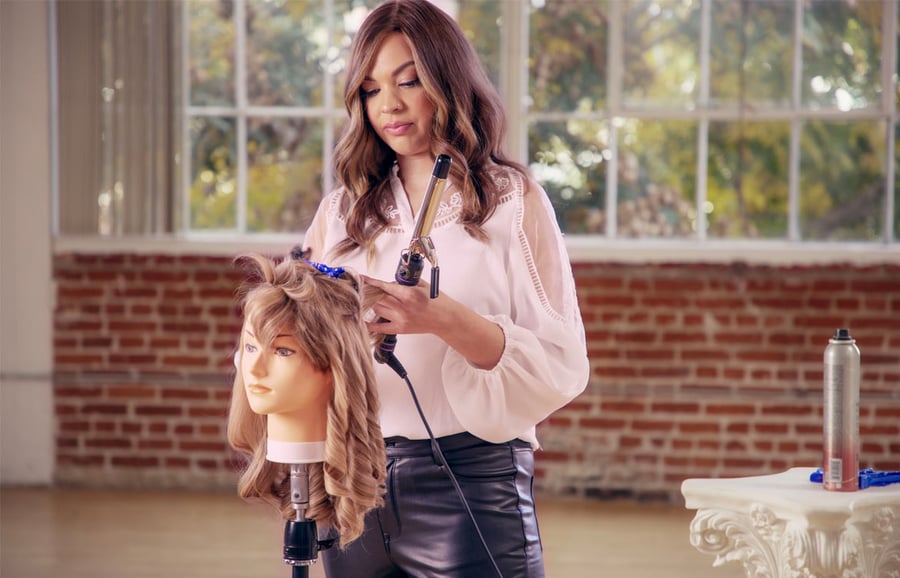Can You Use Heat on Human Hair Wigs? What to Know Before Styling

Styling your human hair wig can be exciting, but it’s also nerve-wracking. You’ve invested time and money into finding the perfect wig, and now you’re worried that one wrong move with a curling iron or flat iron could leave it dry, damaged, or even ruined. The last thing you want is to shorten the lifespan of your wig because you didn’t know the dos and don’ts of heat styling.
At Daniel Alain, we understand the concerns that come with wig care and styling. With years of experience in the wig industry, we’ve helped countless customers style their human hair wigs confidently and safely. We know the materials, techniques, and tools that work best—and the ones to avoid. Our goal is to make wig care stress-free, so you can enjoy a flawless look without the fear of damaging your investment.
In this article, we’ll answer the question, “Can you use heat on human hair wigs?” and break down everything you need to know before styling so that you can feel confident about using heat safely and effectively on your human hair wig.
What Are the Risks of Using Heat on a Human Hair Wig?
Your human hair wig is an investment. It offers a natural look and gives you the freedom to style it in ways that reflect your personality. But if you’re not careful when using heat tools, you might end up doing more harm than good. Here’s what could happen:
Dryness and Damage
Heat tools, like curling irons or straighteners, can dry out the strands of your wig if used incorrectly. This can make the hair brittle, leading to split ends or breakage.
Loss of Shape or Quality
Overheating doesn’t just harm the hair—it can also damage the wig’s cap. This could affect how the wig fits or even distort its structure.
Reduced Lifespan
Unlike your natural hair, wigs don’t grow back or heal. Once the hair or cap is damaged, it’s permanent, which means your wig may not last as long as it should.
It’s natural to feel intimidated by these risks, especially if you’re unsure how to properly use heat tools on your wig. But don’t worry—with the right knowledge and techniques, you can safely style your wig without fear of damage. Let’s dive into how to do just that!
What You Should Know Before Using Heat on Your Human Hair WiG
Before you grab your curling iron or flat iron, there are a few important things to know to keep your wig looking its best. A little preparation and the right tools can make all the difference in safely styling your human hair wig.
1. Quality Matters
Not all human hair wigs are the same. High-quality wigs made from virgin or Remy hair handle heat better because they’re less processed. On the other hand, non-Remy or heavily treated wigs are more vulnerable to damage. Always check the manufacturer’s guidelines—they often include recommended temperature limits to help you avoid trouble.
2. The Right Tools Make All the Difference

The tools you use can either protect your wig or damage it. Here’s what to look for:
Adjustable Heat Settings
Use styling tools that let you control the temperature. This gives you the flexibility to stick to safe heat levels.
Heat Protectant
Always, always apply a heat protectant spray or serum. Think of it as a shield that prevents the heat from harming the hair.
Ceramic or Tourmaline Tools
These tools distribute heat evenly, which lowers the risk of hot spots that can scorch the hair.
3. Keep an Eye on the Temperature

Human hair wigs can usually handle heat up to 250-300°F (120-150°C). Anything hotter can cause damage. When in doubt, start at a lower temperature and only increase if necessary. Taking it slow is always better than rushing and risking harm.
4. Preparation Is Key
Proper prep work makes styling easier and helps protect your wig:
Wash the Wig
Clean the wig using a gentle, cleansing shampoo and conditioner. Dirt and product buildup can react badly to heat, so start with fresh, clean hair.
Dry It Completely
Make sure the wig is fully dry before styling. Heat and moisture don’t mix well and can lead to damage.
Detangle Carefully
Use a detangling comb to remove any knots or tangles. This prevents snagging or uneven styling when you’re working with heat tools.

How to Safely Use Heat on a Human Hair Wig

Follow these step-by-step instructions to protect your wig while styling:
- Place the wig on a mannequin head to stabilize it during styling.
- Spray or apply a heat protectant product evenly across the strands.
- Stick to a safe temperature range and avoid prolonged exposure to any one spot.
- Work in small sections to ensure even styling without overheating any area.
- Use a light hairspray to set the style.
Common Mistakes to Avoid When Using Heat on a Human Hair Wig
Even with the right tools and preparation, mistakes can happen, and they can significantly impact the lifespan of your wig. One of the biggest mistakes is skipping a heat protectant. This is a crucial step that should never be overlooked. Heat protectants act as a barrier between your human hair wig and the high temperatures of styling tools and minimizes the risk of dryness, brittleness, or breakage. Without this protective layer, your wig is far more likely to sustain damage.
Another common mistake is using heat settings that are too high. Unlike natural hair, wigs don’t have the natural oils from the scalp to recover from heat damage. Always start at a lower temperature and only increase if absolutely necessary. It’s better to take a bit more time to style your wig than to risk overheating it and causing irreversible harm.
Finally, don’t neglect post-styling care. Once you’ve finished styling, make sure to properly store your wig to preserve its shape and health. Place it on a wig stand or mannequin head to maintain its structure, and avoid folding or crushing it.
When Should You Ask a Professional for Help?

If you’re feeling unsure or nervous about using heat on your wig, it’s always a good idea to reach out to a professional wig stylist. These experts know the ins and outs of wig care and styling. They have the right tools, experience, and techniques to safely create the look you want without risking damage to your wig. Sometimes, it’s worth letting an expert take over, especially if you want peace of mind.
What’s Next for Styling My Human Hair Wig?
Styling your human hair wig with heat can feel like a gamble, especially when you’re unsure of the right techniques to keep your wig looking great.
We’ve shown that heat styling your human hair wig is possible as long as you follow some key steps. Plus, you’ve learned how to avoid common mistakes and when to call in a professional for help.
Ready to learn even more about wig care and styling? Check out our Wig Care and Maintenance Recommendations or explore our Styling Tutorials for more tips and tricks. If you have any questions or need personalized advice, don’t hesitate to reach out—we’re here to help you keep your wig looking flawless for as long as possible!

.jpeg)
